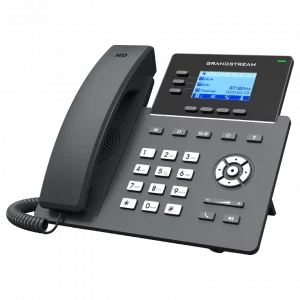
Reaching Global Potential: International Calling Services with SIP Trunk Services
Did you know that 92% of all customer interactions happen over the phone? Despite the explosion of other mediums for customer touchpoints, that real-time call still holds strong.
That makes it more important than ever for businesses to find efficient, flexible and cost-effective methods for calls.
In today’s global economy, many businesses rely on long-distance if not international calls for their sales team to close deals, so how can you ensure you that you are securing the best service for the lowest price?
The short answer: Switch to SIP Trunking.
Don’t worry, we’re going to walk you through the what, why and who of SIP trunking. Are you ready to pay less for your international calls?
What Is SIP Trunking?
Your traditional office phone systems are made up of two components – the PBX and PRI Lines. The PBX manages features such as voicemail and the PRI lines connect calls to the Public Switched Telephone Network where they are rerouted.
When you use SIP Trunks, the IP-enabled PBX connects to a data network instead of the PRI lines to connect to the PSTN over the internet. So SIP Trunking is a method of delivering unified communications and telephone over the internet utilizing Voice over Internet Protocol (VoIP) and Session Initiation Protocol (SIP).
To enable SIP Trunking you must have either an internet connection, or a VoIP Vendor, and IP-enabled PBX and a gateway to support voice communications over IP. That means there is no physical infrastructure required for SIP Trunking making it a lightweight and cost-effective setup that allows your business to reap the benefits of Internet-based phones.
Why Should You Use SIP Trunking for International Calling?
Compared to traditional voice calls options, VoIP has many benefits. It can be a gateway to more flexibility, scalability and less spending. Let’s take a look at the main benefits of SIP Trunking.
1. Save On Costs
When your business relies on making hundreds if not thousands of long distance and international calls a month, the costs can be sky high. They can also be unpredictable with changing tariffs with no explanation.
Implementing SIP Trunking can save you huge amounts on your phone bill. That’s because it provides your business with access to transparent, simple pricing often set on a per-user basis rather than a per minute tariff.
You can expect consistent and reduced telephone bills once you implement SIP Trunking for business. On average, bills are reported to be reduced by 50% and if you heavily rely on international calls the savings could be much higher.
It takes on average 18 calls to connect with a buyer so cutting down the costs on your calls is a huge way to reduce your annual outgoings. The great thing about SIP Trunking is that you get immediate ROI as the savings start immediately.
2. International Mobility
When you combine your voice and data into one single network with SIP Trunking then your business’s remote workers or global locations can be easily consolidated. It also supports a growing business as it provides the possibility of easy and affordable scalability.
The flexibility of introducing new geographic locations or introducing remote working into your organization is a great benefit in the changing world of work. All you need to do is get them set up with a number and if needed, expand your SIP package.
3. Unified Communications
Switching to SIP is a great gateway to a comprehensive unified communications system.
When you pick a provider that enables you to deploy a full suite of features then the possibilities are extensive. A full IP-based communications suite might include mobility, instant messaging, and collaboration apps among other cloud-based communication solutions.
You can’t say that your current traditional phone provider allows the same flexibility, can you?
Consolidating your networks to include both voice and data in one will definitely increase the bandwidth demands on your data connection. However, you will ultimately save vast amounts of money and improve the reliability of your communications.
If you use fiber-optic internet connectivity this is even truer.
4. Employee Mobility
In a recent survey, 41.2% of salespeople said their phone is the most effective sales tool they have. That’s why it’s crucial to provide the flexibility and mobility of SIP.
With SIP you can connect your teams’ mobile devices through VoIP apps that can be securely installed and are easy to use. This way, your team can remain connected to your corporate communication systems wherever they are without costing your business a fortune. This also adds a layer of protection against internet connection failures due to the mobility attributes of SIP and VoIP.
5. No Infrastructure or Hardware
Right now, with legacy telephone systems, it can be tricky to expand the infrastructure to include more staff or locations. You need to contact your provider and wait for potentially long periods of time for them to come and install new phone lines. Or, if you want to provide work mobile devices you need to invest in the handsets or even wait for an order to arrive just to communicate with colleagues.
With SIP, you are able to add more phone lines by connecting handsets to your data connection. Even remote employees can be integrated into your existing company network and provided with a dedicated internal phone number and extension. It’s much simpler and quicker removing barriers to expand your team.
There is also the issue of investing in hardware. With the non-SIP methods of voice communications such as PRIs, you would need to invest in expensive additions as you increased the number of phone lines. With SIP, on the other hand, all you need is to add a phone line or add on service is any additional handsets and to upgrade your monthly service agreement.
6. Reliability
When we talk about reliability with SIP we are talking about two different security features.
You are protected from the physical problem of connection interruption that you can experience with telephone lines. You could experience the lines go down due to extreme weather for example. That won’t happen with a SIP Trunking service.
“What about when a connection fails?”, we hear you ask.
With SIP you are also protected in a second way because should you experience a failure in the connection to your primary SIP Trunk there will be a failover re-route to a secondary SIP trunk. Therefore SIP Trunking for international calls can provide a layer of security to your team.
7. Simple Management
Your IT team can rely on reliable service management from a team of experts at your SIP Trunking service provider.
Anytime you need to add another service or add a phone line, you no longer need to call a telecoms customer services line and wait on hold for inordinate amounts of time. Simply log into your VoIP portal and make the changes that your business needs.
That allows you to cut down wasted time and manage your communications with efficiency.
Is SIP Trunking Right for My Business?
Now, whilst most organizations can financially and operationally benefit from SIP Trunking, it’s not a fit for every single business. There are very few disadvantages compared to other methods but it does rely on sufficient data connectivity bandwidth to successfully rely on VoIP for your business needs.
SIP puts you in control of your own service with an easy to use interface that cuts out the customer service team.
Are You Ready for Reliable, Affordable International Calls?
For the majority of businesses out there, trading in traditional international calling process and infrastructure for a SIP Trunking protocol is the right choice. The benefits greatly outnumber any disadvantages and the savings will be realized from the moment you switch.
For any business owner, keeping operational costs down is always a priority but the end goal for many is also to grow the business and expand operations further down the line.
By investing in your set up now, and making sure your business has the flexibility to grow, you will save money and reduce the barriers to entering a new region or scaling your business. Don’t give yourself any reason to not take the next big step by taking on new regions or increasing your team.
We hope that our guide to SIP Trunking has given you the information you need about making the switch from your traditional phone lines.. For more in-depth information on SIP Trunking and answers to your common questions, check out the FAQ here.


